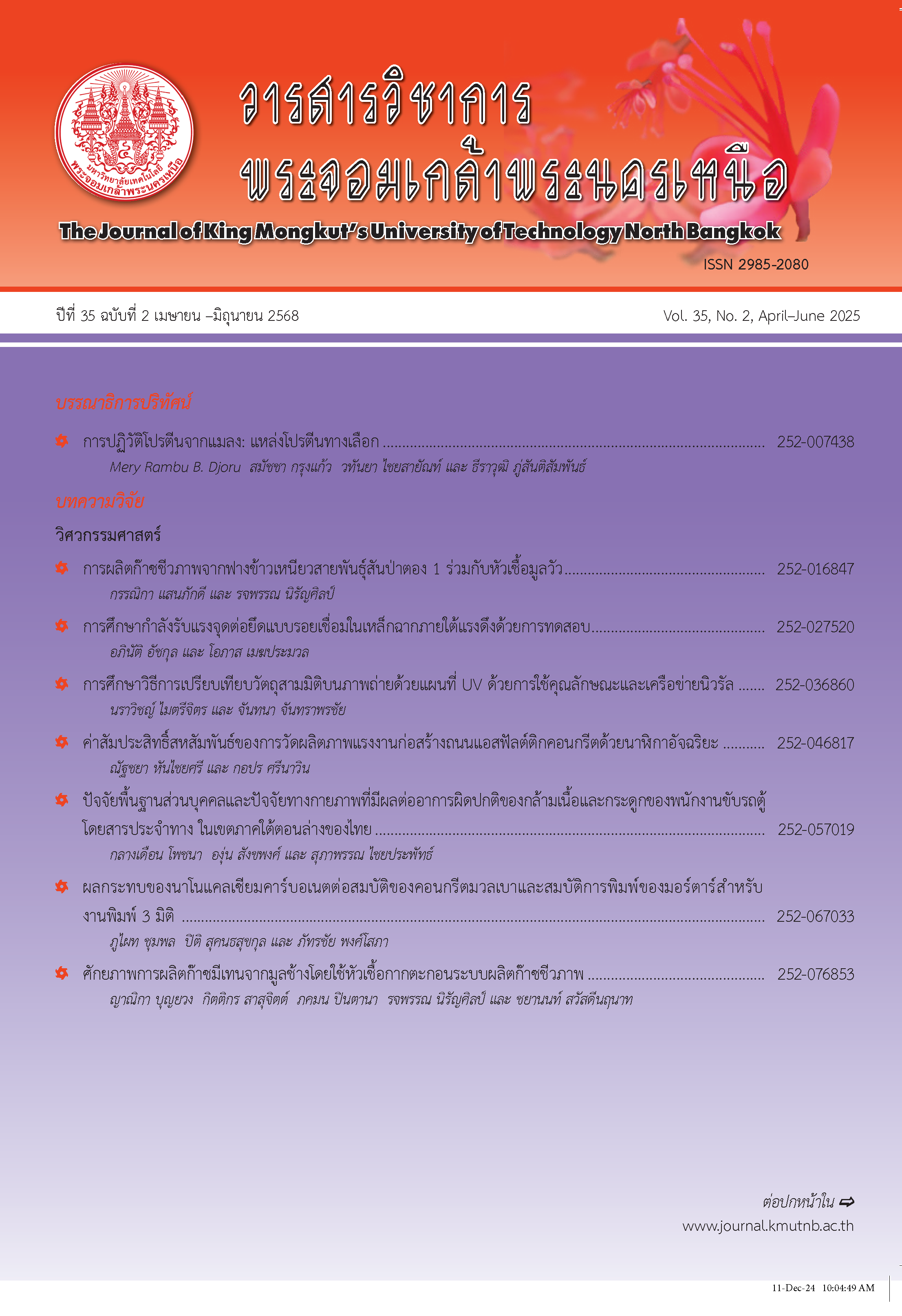Limiting Glare Indices in Sport and Recreation Buildings for Thai Elderly
Main Article Content
Abstract
The objective of this study is to investigate the limiting glare index for Thai elderly in sport and recreation areas. The study made a survey glare from small (luminaires) and large sources (windows) using DIALux for evaluating Unified Glare Rating (UGR) and Photolux program for assessing Daylight Glare Index (DGI). Discomfort glare of Thai elderly was also evaluated. Three indoor sport centers were explored. And, three areas were investigated, which are walkway, activity area, and seating area. There were 230 Thai elderly participated in the study. Data was analysed using Linear Regression Analysis. Results showed that, in overall, limiting glare indices for small source in indoor sport center are lower than an international standard about 1–7 units. The results also illustrated that limiting glare indices for large source in indoor sport center are lower than the international standard. But, the difference is 5–8 units.
Article Details

This work is licensed under a Creative Commons Attribution-NonCommercial-NoDerivatives 4.0 International License.
The articles published are the opinion of the author only. The author is responsible for any legal consequences. That may arise from that article.
References
Discomfort glare in interior lighting: CIE Publication 117, Vienna: Bureau Central de la CIE, 1995.
The SLL lighting handbook, London: CIBSE, 2009.
LG 9: Lighting for communal residential buildings, London: CIBSE, 1997.
The IESNA lighting handbook (10th Edition): Reference and application, New York: IESNA, 2011.
Publication CIE 29.2-1986: Guide on interior lighting, Paris: CIE, 1986.
Guidelines for Indoor Lighting Design, Bangkok: TIEA, 2016 (In Thai).
ANSI/IESNA Recommended Practice-28-2016 Lighting and the Visual Environment for Seniors and Low Vision Population, New York: IESNA, 2016.
T. J. T. P. Van den Berg, J. K. IJspeert, and P. W. T. Waard, “Dependence of intraocular straylight on pigmentation and light transmission through the ocular wall,” Vision Research, vol. 31, no. 7–8, pp. 1361–1367, 1990.
B. D. Elliott, S. Mitchell, and D. Whitaker, “Factors affecting light scatter in contact lens wears,” Optometry and Vision Science, vol. 68, no. 8, pp. 629–633, 1991.
I. D. Bishop and B. Rohrmann, “Subjective responses to simulated and real environments: A comparison,” Landscape and Urban Planning, vol. 65, pp. 261–277, 2003.
J. L. Nasar and E. Cubukcu, “Evaluative appraisals of environmental mystery and surprise,” Environment and Behaviour, vol. 43, pp. 387–414, 2011.
V. Udomsopakit and N. Tuaycharoen, “The study of the effect of daylighting technique on amount of daylight in Thai elderly patient’s room,” in Proceedings The 61st Kasetsart University Annual Conference, 2023, pp. 178–184.
R. G. Hopkinson, “Glare from daylighting in buildings,” Applied Ergonomics, vol. 3, no. 4, pp. 206–215, 1972.
N. Tuaychareon and P. R. Tregenza, “View and discomfort glare from window,” Lighting Research and Technology, vol. 39, no. 2, pp. 185–200, 2007.
J. A. Veitch and G. R. Newsham, “Exercised control, lighting choices, and energy use: An office simulation experiment,” Journal of Environmental Psychology, vol. 20, no. 3, pp. 219–237, 2000.
N. Tuaycharoen, “An investigation of a modified formula of daylight glare and limiting daylight glare indices in the Thai elderly,” Nakhara: Journal of Environmental Design and Planning, vol. 18, pp. 83–96, 2020 (In Thai).
T. Iwata, M. Shukuya, and N. Somekawa, “Experimental study on discomfort glare caused by windows: Subjective response to glare from simulated windows,” Journal of architecture, planning and environmental engineering, vol. 432, pp. 21–30, 1992.

